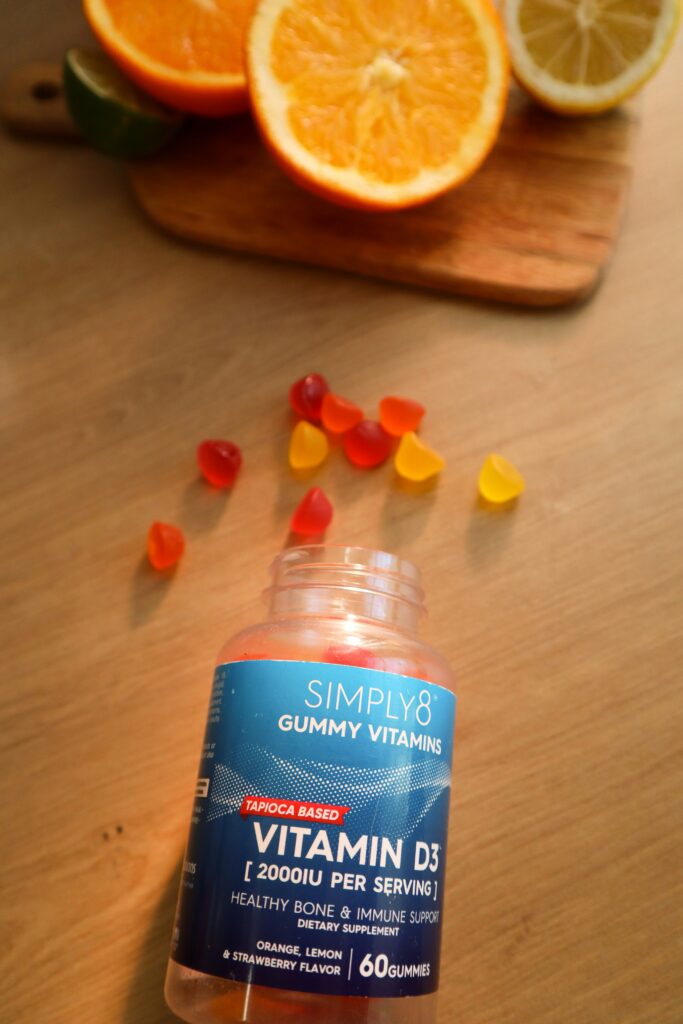
⚠️ Affiliate Disclaimer: This post may contain affiliate links, which means I may earn a small commission — at no extra cost to you — if you make a purchase through one of these links. I only recommend products or services I genuinely trust and believe can provide value. Thank you for supporting My Medical Muse!
15+ Fermented Foods for Gut Health
Top Fermented Foods for Gut Health: Your Complete Guide
Your gut is a powerful ecosystem, it contains trillions of bacteria that don’t just help you digest food, they also support your immune system, regulate your mood, control inflammation, and even influence your skin. When your gut is out of balance, the effects ripple throughout your entire body.
That’s where fermented foods come in, these probiotic-rich superfoods have been used in nearly every culture throughout history to support digestion, immunity, and whole-body health.
In this ultimate guide, you’ll learn:
- What makes fermented foods so powerful.
- The science behind their benefits.
- 15+ top fermented foods for gut health.
- How to include them in your daily meals.
- What to avoid when shopping.
- Global fermented foods you may not know about.
- A 7-day gut-healing meal plan.
- And how to start fermenting at home.
Let’s dive in.
Why Fermented Foods Matter for Gut Health
In today’s modern diet, we’re exposed to overly processed foods, antibiotics, and low-fiber meals, all of which strip away the diversity of our gut microbiome. This imbalance is linked to bloating, fatigue, poor immunity, acne, anxiety, and even chronic illness. Fermented foods help restore balance.
These foods are rich in live beneficial bacteria, known as probiotics, that help repopulate your gut with the good guys. They also produce enzymes, B vitamins, and organic acids during fermentation that help you absorb nutrients more effectively.
Benefits of Eating Fermented Foods:
- Better digestion and reduced bloating.
- Stronger immune system.
- Enhanced mood and mental clarity.
- More regular bowel movements.
- Reduced sugar cravings.
- Improved nutrient absorption (especially calcium, iron, and zinc).
The Science of Fermentation and Gut Health
Fermentation is a natural preservation method where microbes (like bacteria, yeast, or fungi) break down sugars into acids, alcohols, or gases but it does more than preserve, it transforms it.
Types of beneficial microbes:
Lactic acid bacteria (LAB): Found in yogurt, kimchi, and sauerkraut. They produce lactic acid that keeps harmful bacteria in check.
Yeasts: Common in kombucha and sourdough, producing natural carbonation and B vitamins.
Acetobacter: Found in apple cider vinegar and kombucha, producing acetic acid and antioxidants.
Fermented foods support your microbiome by:
- Boosting microbial diversity.
- Enhancing anti-inflammatory compounds.
- Supporting the production of short-chain fatty acids (SCFAs) that feed your gut lining.
- Assisting in the production of neurotransmitters like serotonin and GABA.
Top 15 Fermented Foods for Gut Health
Here are the most effective, science-backed fermented foods you should consider adding to your daily routine:
Yogurt:
Rich in Lactobacillus and Bifidobacterium, yogurt is a classic probiotic powerhouse. Go for plain, unsweetened varieties with “live and active cultures” listed on the label.
Kefir:
A tangy, drinkable yogurt made by fermenting milk with kefir grains. It contains over 30 strains of bacteria and yeastfar more than typical yogurt.
Sauerkraut:

Fermented cabbage that’s high in probiotics, fiber, and vitamin C. Be sure to buy raw, unpasteurized sauerkraut kept in the refrigerated section.
Kimchi:
This Korean staple is spicy, crunchy, and bursting with live cultures and immune-boosting compounds like garlic and ginger.
Kombucha:
A fermented tea drink made with a SCOBY (symbiotic colony of bacteria and yeast). Kombucha contains probiotics, antioxidants, and mild detoxifying properties.

Miso:
A salty, umami paste made from fermented soybeans, barley, or rice. Miso is rich in Aspergillus oryzae, a beneficial mold that enhances digestion and nutrient absorption.
Tempeh:
Fermented soy pressed into a firm cake. High in protein and probiotics, it also contains vitamin B12, rare in plant-based foods.
Natto:
Sticky fermented soybeans with a strong aroma. Natto is rich in Bacillus subtilis and nattokinase, an enzyme that may support heart and brain health.
Fermented Pickles:
Cucumbers fermented in brine (not vinegar) are loaded with beneficial bacteria. Look for the phrase “naturally fermented” or “with live cultures.”
Apple Cider Vinegar (ACV):
Raw ACV with the “mother” contains live enzymes and friendly bacteria. A tablespoon in water before meals can aid digestion and blood sugar balance.
Sourdough Bread:

Although baking kills live cultures, traditional sourdough fermentation breaks down gluten and anti-nutrients, making it easier to digest.
Lassi:
An Indian fermented yogurt drink, sometimes flavored with cardamom or cumin. Great for calming digestion and restoring gut balance.
Rejuvelac:
A fermented drink made from sprouted grains like wheat or rye. It’s enzyme-rich and used in raw food detox programs.
Beet Kvass:
A tangy Eastern European tonic made by fermenting beets in brine. Supports liver detox and boosts energy.
Fermented Coconut Yogurt or Kefir:
Perfect for dairy-free diets, coconut-based ferments offer probiotics without the lactose, and often include added gut-friendly strains.
How to Add Fermented Foods to Your Diet (Without Overdoing It)
Fermented foods are potent, especially if you’re new to them. Start slow to avoid bloating or discomfort.
Here’s a simple guide:
Meal Add This
- Breakfast: Kefir smoothie or Greek yogurt with chia
- Lunch: Side of kimchi, pickles, or beet kvass.
- Dinner: Miso soup or sauerkraut with your meal
- Snacks: Coconut yogurt or kombucha
Rotate your fermented foods weekly to introduce different bacterial strains and improve microbial diversity.
Fermented Foods Around the World
Fermentation is a global tradition. Each culture has its own delicious spin:
African Ferments:
- Ogi (Nigeria): A fermented porridge made from maize, millet, or sorghum—gentle on the gut and full of lactic acid bacteria.
- Fufu (West Africa): Fermented cassava or plantain mash; traditional versions often contain gut-boosting microbes.
Indian Ferments:
- Dosa & Idli: Fermented rice and lentil batters that make light, digestible pancakes and steamed cakes.
- Lassi: Cooling and probiotic-rich, often consumed after spicy meals.
Ethiopian Ferments:
- Injera: A sour, spongy flatbread made from teff. While cooking kills live cultures, the fermentation still enhances nutrient availability.
South American Ferments:
Chicha & Masato: Fermented maize or cassava drinks often consumed ceremonially, rich in wild yeast and native bacteria.
Exploring international ferments can offer not only variety, but also a broader spectrum of gut-boosting organisms.
7-Day Gut-Healing Meal Plan with Fermented Foods
Day 1:
- Breakfast: Plain yogurt, berries and honey.
- Lunch: Brown rice and tempeh stir-fry.
- Dinner: Miso soup and sautéed greens.
Day 2:
- Breakfast: Sourdough toast, avocado and poached egg.
- Lunch: Kimchi fried rice
- Dinner: Grilled chicken and sauerkraut.
Day 3:
- Breakfast: Kefir smoothie with banana.
- Lunch: Lentil soup and fermented pickles.
- Dinner: Dosa and vegetable curry.
Day 4:
- Breakfast: Overnight oats and coconut yogurt.
- Lunch: Quinoa salad and beet kvass.
- Dinner: Ogi and boiled eggs.
Day 5:
- Breakfast: Kombucha and fruit.
- Lunch: Tempeh Buddha bowl
- Dinner: Baked salmon and kimchi slaw.
Day 6:
- Breakfast: Lassi and nuts
- Lunch: Roasted veggie sandwich on sourdough.
- Dinner: Miso glazed tofu.
Day 7:
- Breakfast: ACV in warm water and oats.
- Lunch: Fufu and okra soup.
- Dinner: Pickled veggies and grilled fish.
How to Choose the Right Fermented Foods
Be selective, many commercial fermented foods are pasteurized, killing the beneficial microbes.
Look for:
- Live & active cultures
- Raw and unpasteurized labels
- Simple ingredient lists (vegetables, salt, water)
- Low or no added sugar
Avoid:
- Vinegar-brined pickles (not fermented).
- High-sugar yogurts and kombucha
- Artificial thickeners or preservatives
DIY: Make Your Own Fermented Foods at Home
Simple Sauerkraut Recipe:
You’ll need:
- 1 medium cabbage (shredded)
- 1.5 tbsp sea salt
Steps:
- Massage salt into cabbage until water is released.
- Pack tightly into a clean jar. The cabbage should be submerged.
- Cover loosely and ferment at room temperature for 5-7 days.
- Taste daily. Once tangy enough, refrigerate.
Easy Kombucha (With Starter):
- Brew sweet tea and cool it.
- Add your SCOBY.
- Cover with cloth.
- Let sit 7-10 days, then bottle and enjoy.
Making ferments at home gives you full control over ingredients and strength.
Final Thoughts:
Fermented foods are a natural, affordable, and delicious way to support your gut and your overall health, from yogurt and kimchi to ogi and dosa, these living foods reconnect us to ancient traditions and modern science alike.
Whether you’re healing your gut, boosting immunity, or just exploring new flavors, start with one small addition each day, your microbiome will thank you.
👩⚕️ Need Personalized Health Advice?
Get expert guidance tailored to your unique health concerns through MuseCare Consult. Our licensed doctors are here to help you understand your symptoms, medications, and lab results—confidentially and affordably.
👉 Book a MuseCare Consult Now



